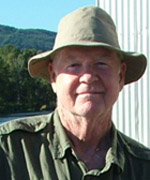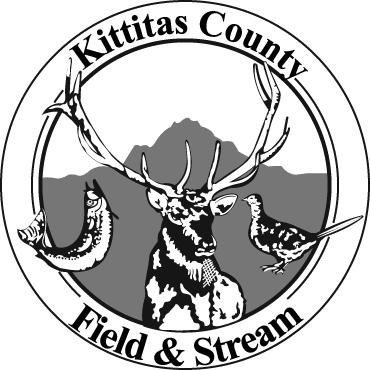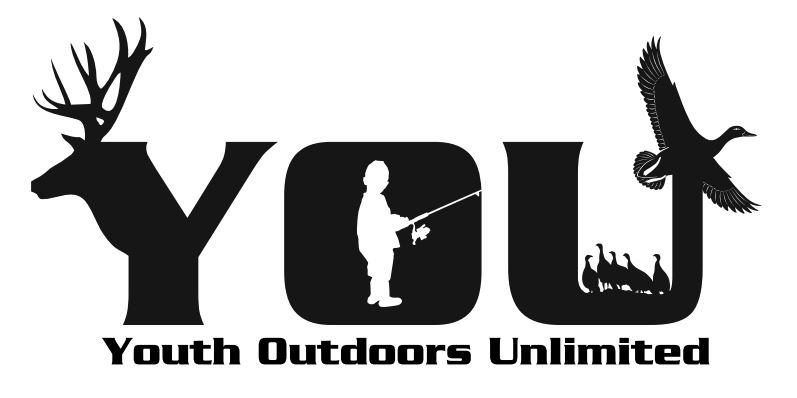Archive for April, 2015
Small Kids and Hunting
Wednesday, April 15, was opening day of spring turkey hunting season here in Paradise. Sometime that morning, I caught an email from one of my local heroes, Aaron Kuntz. Aaron and four-and-a-half-year-old Sophia had gone turkey hunting.
His story took me on a rich journey through a huge jumble of memories. Wandering through those early moments, watching again the discoveries of those who became the best hunting and fishing and outdoor partners a guy can have, was at once joyful, funny and deeply poignant.
As you know, I have been in on the rearing of a big handful of Hucklings. Today, they are scattered across the West making their lives work; some rearing their own outdoor partners. Still, those very early times afield – those times they absorbed our traditions and patience and their place with the earth and safety in all aspects of being outdoors – are as fresh as yesterday.
As my now-adults learned to hunt, they seemed always about to bolt for the outdoors. I still remember my own yearning for balance between indoors and the earth and the wild – how The Old Man would look at me and say something like, “For cryin’ out loud, will you at least pretend you don’t mind being inside for a while?” I have always liked that look on a kid.
Tim was fascinated with dirt and bugs and birds and electronics, about the time programmable calculators hit the market. It was touch and go for a while there, but he grew into a fine outdoor loving techno-guy. He started deer hunting at 14, the legal age to do so in Colorado. That first year, deer after deer slipped out in front of him, while he examined “a lot of fresh tracks.” Undaunted by the ribbing he took, he just said, “Wait’ll you see the buck I get next year.”
That second year, he persisted through our Southwest Colorado host’s insistence that there weren’t any really big bucks around. Opening day found us a few hundred yards apart in patches of pinion-juniper woods. I followed a set of shots that sounded like his little 6mm, and found Tim standing over the biggest buck I’d seen in a couple decades. I helped him get it dressed, erasing the six-foot-high question mark hanging over his head as I walked up.
Daughters Michelle and Nicole always loved our family’s annual antelope hunt to Wyoming. Starting at about age six or seven, they made a point of taking eyeballs or brains or some other piece of one or more antelope to their science teachers – a sort of bribe for waiving a few days of absence. Nicole loved the stalks and the outdoor life, but passed on hunting. Michelle couldn’t wait for her first antelope hunt.
By Noon, we’d made several long stalks to no avail. At the “shining” time, as the sun was setting and the white fannies of the antelope shone brilliant in the last rays, we found several antelope over a hill. I’ve never seen anyone so focused on a stalk or a quarry as Michelle.
In Zen it is said that, when Spirit and Physical are in balance, the bow will release the arrow itself. I believe the same to be true of a rifle. After an interminable silence, her rifle spoke. I hugged her, and said, “Great shot!” She sat up, looking back and forth between the antelope and me a couple times, and asked, “Did the rifle fire?”
Anna and Tena loved the hunting trips, but ate up the fishing and camping. Any fishing trip ends with them counting more and bigger. Tena and hunting hubby Chris are rearing world class outdoor kids.
Edward, Last of the Hucklings, was 18 months old when I took him on his first duck hunt. We were somewhere down along the Arkansas River in southern Colorado with Brad Johnson. Brad was editor of the Douglas County News Press, and the guy who got me started writing these weekly versions of my reality – sometime in 1988. Anyhow, the kid had a full, if tiny, camo outfit and was perched where he could look over our shoulders as birds came into our decoy setup. He would hoarsely whisper “Biwd.. Biwd!” or “Dack!” or “Qwak!” as mallards swept in. He laughed at good shooting and would frown at every miss. I was convinced then, as I am now, that he had been there and seen all that in some earlier time. Be that as it may, I still smile at memories of that day. And I would give most anything I own to have that day – or any of hundreds with one or another of my small Hucklings – again.
Here’s Aaron’s story – that turkey morning email.
“Sophia and I ventured into the woods this morning at about 4:45 AM and found ourselves surrounded by gobbling turkeys as the sun began to rise. By 5:45 we had three gobblers zeroing in on us from three different directions. By 6:00 AM Sophia heard footsteps just over the edge of the bench in front of us, she said ‘dad I hear something walking’ and before I could say anything the turkey let out an ear ringing gobble just out of sight at about 50 yards away. Just then I could see his head floating through the trees as he worked directly at us in full strut. I told Sophia to tell me when she could see him. I watched him work his way in to about 20 yards when Sophia whispered ‘I see him dad…shoot him!’ …be sure to ask Sophia to tell you her first hunting story next time you see her.”
Comments Off on Small Kids and Hunting
Have a Trashy Earth DAy
Happy Earth Day Tuesday! Since 1970, April 22 has been set aside as a time to honor our Mother Earth. Some will argue that the environmental movement had its birth on that day. On the other hand, those among us who’ve built lives from the ground and the living things springing from it, established family roots in it, and see the web that holds it all together, might argue that the movement is much older. Be that as it may, most of us will take a little time in the next few days to ponder this planet which makes our lives so bountiful.
In honor of Earth Day, folks around the valley will plant trees, clean up and sweep up, and haul away literally tons of trash from places it didn’t need to be left in the first place. Every day is Earth Day for members of the Reecer Creek Rod, Gun, Working Dog & Outdoor Think Tank Benevolent Association, of course, but we always make special efforts on this weekend. Thus, tomorrow is Annual Casual Shooting Areas along Durr Road Cleanup Day, organized every year by the Kittitas County Field and Stream Club, with help from Waste Management, Kittitas County Solid Waste, Kittitas County Public Works, and the Department of Fish and Wildlife. Then, too, Dan Bramstedt, Jeep Johnson and Nika Mihailov prepare a hot dog and hamburger lunch for the volunteers. (Did I mention the doughnuts?)
In a given year, anywhere from 40 to 80 pickers come to play. We have picked up empty rifle brass, bag upon bag of spent shotgun shells, paper, cardboard, shot up computers, shattered glass building blocks, tires, cans and plastic bottles, brazillians of broken beer and wine bottles and pickup loads of almost anything else a fool could carry to the hill, shoot up and leave. We have several times pretty much filled the 30-yard dumpsters provided by Waste Management, with somewhere between two and three tons of shooters’ irresponsibility. It’s an appropriate way to celebrate the day – after all, as we rake and clean up, we literally groom Mother Earth.
I still argue that some very ancient trees and I invented Earth Day in Tacoma when I was about three years old. Through their long lives, stretching into 1960s, Grandma and Grandpa Minshall lived at the edge of a stand of old growth cedars and Douglas firs in Tacoma. Tall ferns and mosses, and all the other plants that make up the Northwest’s temperate rainforest grew wild there, all crowded up to Grandma’s flower beds bordering Grandpa’s soft green lawn.
At that very early age, I would slip into the ferns and trees and totally disappear within feet of that manicured lawn and those giant flowers. Sometimes, while everybody was busy running around the neighborhood looking and hollering for me, I’d visit with those big ancient trees. Hearing their voices (since no one had yet told me they could not speak), I always felt a part of some protective family. Together, those trees and I invented Earth Day as I know it. To this day, I am in awe of the life force of great old trees, and cannot pass by one of them without paying homage to it.
I will readily admit that my fascination with Earth Day could just be that ‘60s stuff we brag about, but I take the day seriously. I believe that each of us IS the Earth, since every cell in our bodies is built of earth minerals and chemicals drawn from the soil and air and water which produce our food. How can we not recognize our responsibility to the planet and to those building materials and resources we use to sustain ourselves?
Consider the possibilities: meditating on the planet and its web of life; taking outdoor action through work and play; and eating food with joy, gusto and laughter. Such things must be good for Mother Earth. The late Julia Child would approve, too, I think. Touring the US in the late 1990s, she raised her voice about how we have divorced ourselves from one of the great joys of life: food. She spoke of the health benefits of simply enjoying food. Carrying that into taking outdoor action and eating food with joy, gusto and laughter has to be good for the planet.
Join the party. You will be able to tell your grandchildren that you played alongside the outdoor heroes of Kittitas County. Watch their eyes light up when you mention collecting trash alongside such icons as Gordon “Keep That Road to Wild Places Open Forever” Blossom, Lee “Small Streams are the Answer to All Fishing Blues” Davis, Bill “Dances with Rattlers” and Deborah “Bird Whisperer of Paradise” Essman.
By the way, shooting range rules and locations are about to change along Durr Road. Come to the Wednesday, April 29, discussion at Hal Holmes 6 p.m. See for yourself how the DFW changes will help keep the whole area cleaner.
First, though, come play tomorrow. 9 a.m. on Durr Road – look for the signs.
Happy Earth Day, 2015…
Comments Off on Have a Trashy Earth DAy
You and the Weather
In our last episode, we were discussing our winds. As resident bio-meteorologist of the Reecer Creek Rod, Gun, Working Dog & Outdoor Think Tank Benevolent Association, it occurs to me that we might discuss a few of the physical and psychological effects of wind (and other weather) upon us humans
Behavioral studies have shown that, in a hot dry wind, men often become restless; more likely to be aggressive, with an adrenalin rush and mobilization of glucose reserves. Women, on the other hand, generally seek shelter and respond in more passive ways. Some scientists consider this an ancient physiological response to family danger.
With very warm and dry air, discomfort generally relates to electrical ions. In very dry air, particularly with a warm wind, there is often an excess of negative ions. Maybe it’s the loss of positive ions attached to water vapor, or the friction in the air creating more negative ions. At any rate, with a negative ion excess, people become irritable and short‑tempered.
Examples abound. When the hot and dry Santa Ana winds are blowing off the desert, Los Angelinos in increasing numbers (largely men) become argumentative and violent over trivial matters, and auto accidents significantly increase. In late spring of 1971, in Lawrence, Kansas, we had a week of very warm, windy and exceptionally dry weather. In our community study room, grad students squabbled over anything (“Do you HAVE to turn those *!^# pages so $#& loud?”). It was a terrific bio-meteorology lab experiment.
The effects of humidity and air pressure on humans and other lie forms have intrigued us since antiquity. Hippocrates wrote a great deal about “medical geography” (much about humidity and air pressure). Dry conditions with high pressure might lead to phlegmatic conditions improving, dry eyes, protracted fevers and melancholia, while rainy weather (and low pressure) might bring an increase in epilepsy, mortifications and apoplexy. He postulated more diseases in regions of higher humidity, and correlated arthritis with cool humid climates. We know more today, but…
In much of Europe, medical‑meteorological forecasts are broadcast, and available by phone, for planning activities to avoid fatigue, psychic issues and other influences which might make one accident‑prone, or trigger inflammatory diseases. Studies there found rising death rates from circulatory diseases with high air pressure, from cancer during low pressure cycles and higher suicide rates with rapid changes in air pressure. Are we ready for “body weather” forecasts?
In cold weather, we feel colder in high humidity than in very dry air. High humidity apparently decreases the insulative quality of the air. Too, skin is “hygroscopic,” absorbing moisture and expanding, perhaps exposing it more. Hair is hygroscopic, also, expanding and relaxing into its “normal” pattern of curls or straightness in moist air.
In hot air, high humidity represses cooling from perspiration and breathing, and hearts work harder to get blood to the skin’s surface for cooling. Hot moist air often triggers a mild depression (to keep us inactive and in the shade, perhaps). The very young and the very old suffer highest death rates, because their bodies’ cooling mechanisms are not as effective as others.
We speak of fish and wildlife activities and the solunar tables, but humans also respond to air pressure changes. Some experts claim that our bodies are as sensitive to atmospheric pressure as to temperature. Internal liquid pressure rises as air pressure falls, and vice versa – changes that have been tied to levels of alertness. A falling barometer may trigger mildly depressed moods and mental states, and a loss of problem‑solving efficiency. In studies carried out in Philadelphia, high barometric pressures coordinated with admissions for depression, while low air pressures were highly correlated with intoxication.
The all‑time classic pressure experiment took place in September of 1938. Freshmen at Massachusetts State College took a standardized set of tests over three days, during passage of a hurricane. As the hurricane approached (slowly falling pressure) grades were slightly above average. On the second day, during rapidly rising and falling air pressure, scores were 20 percent above the norms. On the third day, with slowly rising pressure, grades were a bit below norms. (I have seen students pray for hurricanes before tests, but I doubt they realized the benefits which might accrue.)
A number of studies have been done with regard to human/weather interactions, and web info abounds. For pleasant spring reads, I have several suggestions, all of which can be found online and for very few dimes. Check out Watching for the Wind: The Seen and Unseen Influences on Local Weather by James G. Edinger, Weather and Health by Helmut E. Landserg, Body Weather by Bruce Palmer, Hippocratic Heritage by Frederick Sargent II, and Weather and Health by Helmut E. Landserg.
Rain, humidity and lightning impact us, too. It’s another conversation, perhaps, down the line.
Happy spring.
Comments Off on You and the Weather
The Coming of the Wind – and Spring
Perhaps it was bothering you, too. For several weeks leading up to the last few days of March there was no wind. I would wander through my garden and yard, wondering in the back of my mind where the wind was. Much as I get cranky about those strong gusty winds, I was left with some odd sense that, without the wind, we could not have spring.
Then it blew in. By the end of March it had again inserted itself into our psyches. Last Saturday evening, wind was on the lips of several homeys.
During that Chukar Run Banquet evening, we were celebrating the 96th birthday of the Kittitas County Field and Stream Club. [It was a great evening, thank you. We raised a fair pot of funds for Fifth Grade Camp, our Washington Children’s Outdoor Bill of Rights initiative and the club’s work on behalf of maintaining access to the public lands of Paradise.] Now that I think about it, some of those “windy” comments may have been directed at our MC. Hmmm. Be that as it may, a couple of the questions got me thinking about my responsibilities as resident meteorologist of the Reecer Creek Rod, Gun, Working Dog & Outdoor Think Tank Benevolent Association and Chair of the Human Response to Weather Subcommittee.
As we were admiring a wind vane in the line of silent auction items, one of my favorite outdoor nuts leaned over and quietly asked, “Okay, so spring is here. What is this stuff with the wind? You’re supposed to know about this. What is it about walking around a corner into a warm blast of wind and suddenly getting so cranky I just want to pop someone? And clouds…?” He nodded toward his wife, laughing with a friend. “She freaked out with those cloud days a few weeks ago…” I suggested a cool malt beverage, promised to talk more about it, and got back to my MC duties. Clearly there is work to be done. In the next week or two, we will explore the effects of wind and weather on humans, but for now let’s think about those winds.
Air is just a light fluid. Like water and other fluids, it seeks “leveling.” Lift a bucket of water from a tub, and the other water flows to the fill in the hole. Air is the same way.
Warm air may be light enough to create a “low pressure” area. More dense air (from a “high pressure”) may then flow to fill it. Air moves always from high to low pressure, down what is called a “pressure gradient.”
We have three general types of winds in Paradise: cyclonic, mountain‑valley and katabatic.
The vast majority of our winds, however, are simple pressure gradient winds. They blow in from the northwest, coinciding with our valley’s unique topographic northwest-southeast alignment. Our Strongest winds will be associated with a high pressure over the cool water off our northwest coast and a low pressure from warming out in the Columbia Basin (or even southern Idaho) creating a steep pressure gradient. You already know that we now begin our windy season.
Cyclonic winds come with large storm systems moving across the region. The big winds on the coast this winter were cyclonic winds, moving around, and into, the lows at the center of the storms.
Mountain-valley winds move up and down the canyons around Paradise, as a result of differential heating and cooling. Warming atop a hill may draw air up (morning valley breeze); cooling or snow up high may increase the density of air until it slides down (evening mountain breeze) into the valley.
Katabatic winds blow downhill. Our most common katabatic wind is the Chinook (though we see less of it than White Swan or Wenatchee). Air moving up the west side of the Cascades may push up against a “lid” of stable air over the crest and be forced down the east side and/or drawn into a sunny and warm area of low pressure off to the southeast. It will be heated by compression as it flows downhill into Paradise, becoming relatively drier and drier (thus our “rainshadow”).
Winds here are strongest during the warm season and in afternoon/evening – thermally driven. There certainly are calm periods through the year, although along the higher ridges around us the winds are relatively dependable. As the air rises up onto and over those ridges, it is compressed to varying degrees against the stable upper atmosphere; that compressed (more dense) air will move a turbine blade more easily than less dense air at a given speed. Thus are fueled the wind turbines around our valley.
For current winds at Bowers Field, and a look at the latest three days, check out weather.noaa.gov/weather/current/KELN.html. For wind and temperature patterns along a very cool interactive I-90 profile between Seattle and Ellensburg, go play at i90.atmos.washington.edu/roadview/i90.
Whatever you do, celebrate these glorious, if occasionally cursed, winds sent to awaken us to spring. Say a little prayer for those poor devils who must live in calm, dead places and breathe the same air over and over and over.







